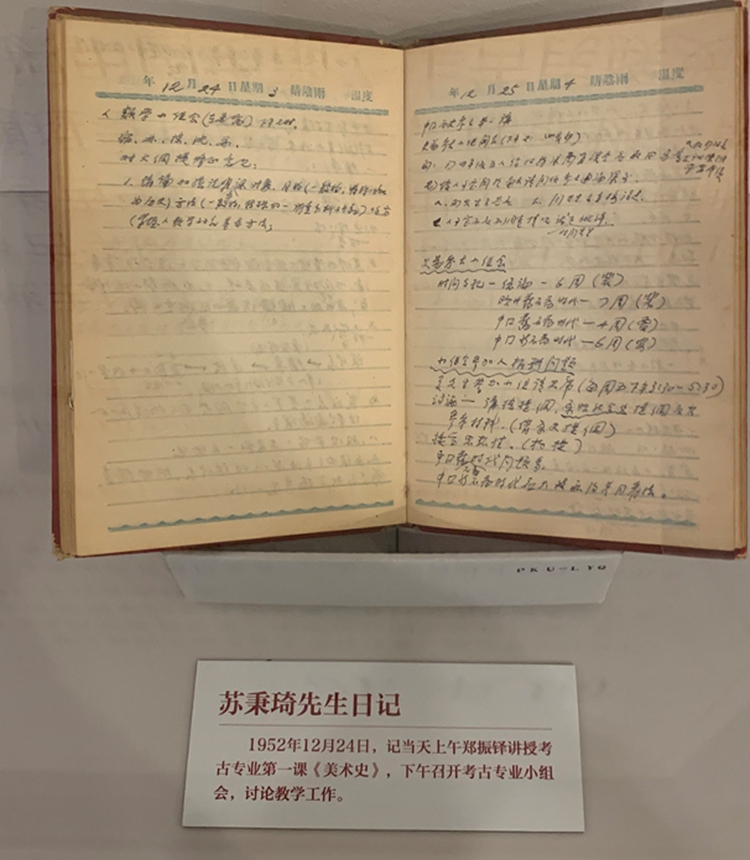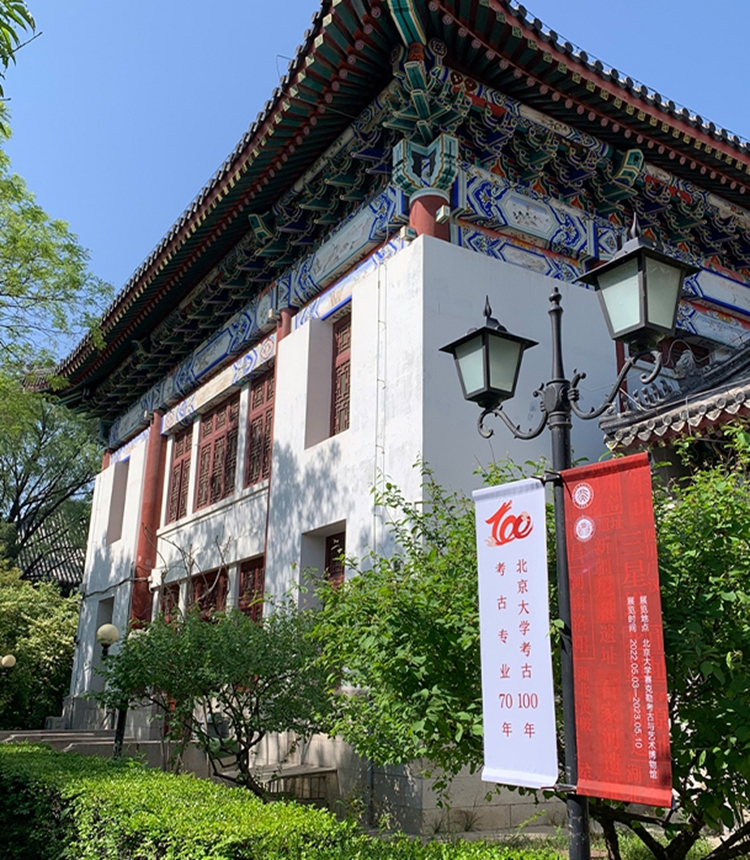Peking University, May 6, 2022: A new exhibition kicked off at the Arthur M. Sackler Museum of Art and Archaeology at Peking University on Tuesday to mark the 100th anniversary of the establishment of the archaeology discipline at the school. Archaeologists from both China and abroad said that the progress made by the School of Archaeology and Museology at Peking University is a mirror reflecting the rise of modern Chinese archaeology and has allowed it to stand at the forefront of the discipline in the world.
An archaeological diary written by the well-known late archaeologist Su Bingqi Photo: Courtesy of the School of Archaeology and Museology at Peking University
The Arthur M. Sackler Museum of Art and Archaeology at Peking University Photo: Courtesy of the School of Archaeology and Museology at Peking University
One hundred years ago, after modern archaeology was introduced to China, Peking University set up an archaeology research room. In 1952, Peking University established the first archaeology major in the country.
The exhibition Peking University Archaeology: 100th Anniversary 70 Years of Archaeology Specialty Teaching in China shows the important archaeological milestones that Peking University has achieved over the past century and how archaeology has gradually developed into a top sophisticated discipline in China.
Holding up a mirror
Chen Xingcan, director of the Chinese Academy of Social Sciences' Institute of Archaeology, said during the Tuesday celebration that the development of archaeology at Peking University is a microcosm of Chinese archaeology. "Over the past 100 years, Peking University has made significant contributions to the development of Chinese archaeology and the protection of cultural heritage when it comes to the establishment of the discipline, personnel training and scientific research."
In March, the Piluo Site in Daocheng county, Southwest China's Sichuan Province, a large-scale Paleolithic site that was excavated under the leadership of professors from Peking University, was listed as one of China's top 10 archaeological discoveries of 2021 by the country's National Cultural Heritage Administration.
Ran Honglin, head of the archaeological team at the Sanxingdui Ruins site, one of the most visited archaeological wonders in 2021, told the Global Times that many professionals working in the various pits at the site, including himself, are graduates from the School of Archaeology and Museology at Peking University and that he felt very honored to participate in such a significant archaeological discovery.
Shen Ruiwen, dean of the School of Archaeology and Museology at Peking University, told the Global Times that many universities in China have imitated the "Peking model" of teaching archaeology, especially when it comes to field archaeology internship.
Established more than 60 years ago, the course is a four-month-long internship divided into four stages: field investigation, formal site excavation, interior finishing and submitting archaeological reports.
He pointed out that the internship at Peking University is much more systematic than similar courses at Western universities because in Western universities this course is not led by teachers personally. In the West, students go to dig sites and as long as they stay for a certain number of days, they can get credit for the course. However, these students may only actually perform just one or two of the above four steps.
International communication
Ninety-year-old archaeologist and former professor at Peking University Yan Wenming said that when they initially set out to establish an archaeology field with Chinese characteristics, they realized they needed to have a global vision. This realization led to a series of international exchanges.
According to Shen, the school has established several student exchange programs with universities in countries such as the US, Japan, Poland and Turkey. Additionally, the field archaeology internship has attracted many teachers and students overseas to come to Peking University.
"Some foreign professors bring their students to our school for one to two months for an exchange in the field archaeology internship. Meanwhile, we also send outstanding students abroad for international exchanges," he said.
Im Sang-taek, a professor of at Pusan National University in South Korea, recalled that his time at the university as a visiting scholar was particularly significant and that he was very impressed by how the school intertwined theory and practice in the field.
Global recognition
The level of sophistication in archaeology that Peking University has achieved in the past century has also been recognized by the world.
Dame Jessica Rawso, a professor of Chinese Art and Archaeology at Oxford University, said in a prerecorded video address that archaeologists and historians around the world look to the school as "a leader in our understanding of China's past."
"Today the school is working with teams in Sichuan Province in new finds in Sanxingdui. And while these important contributions have been made, the wider world has come to recognize the exceptional role that China has played in its development in ancient societies alongside those in Western Asia and Egypt," she said.
Dorian Q Fuller, an internationally renowned plant archaeologist from the Institute of Archaeology at University College London, also pointed out that the School of Archaeology and Museology at Peking University has continued training archaeologists to the highest standards over the years and remains at the forefront of combining teaching and cutting-edge research.
Looking ahead to the new era, Shen said they will continue devoting themselves to the development of archaeology with "Chinese features, style and ethos."

